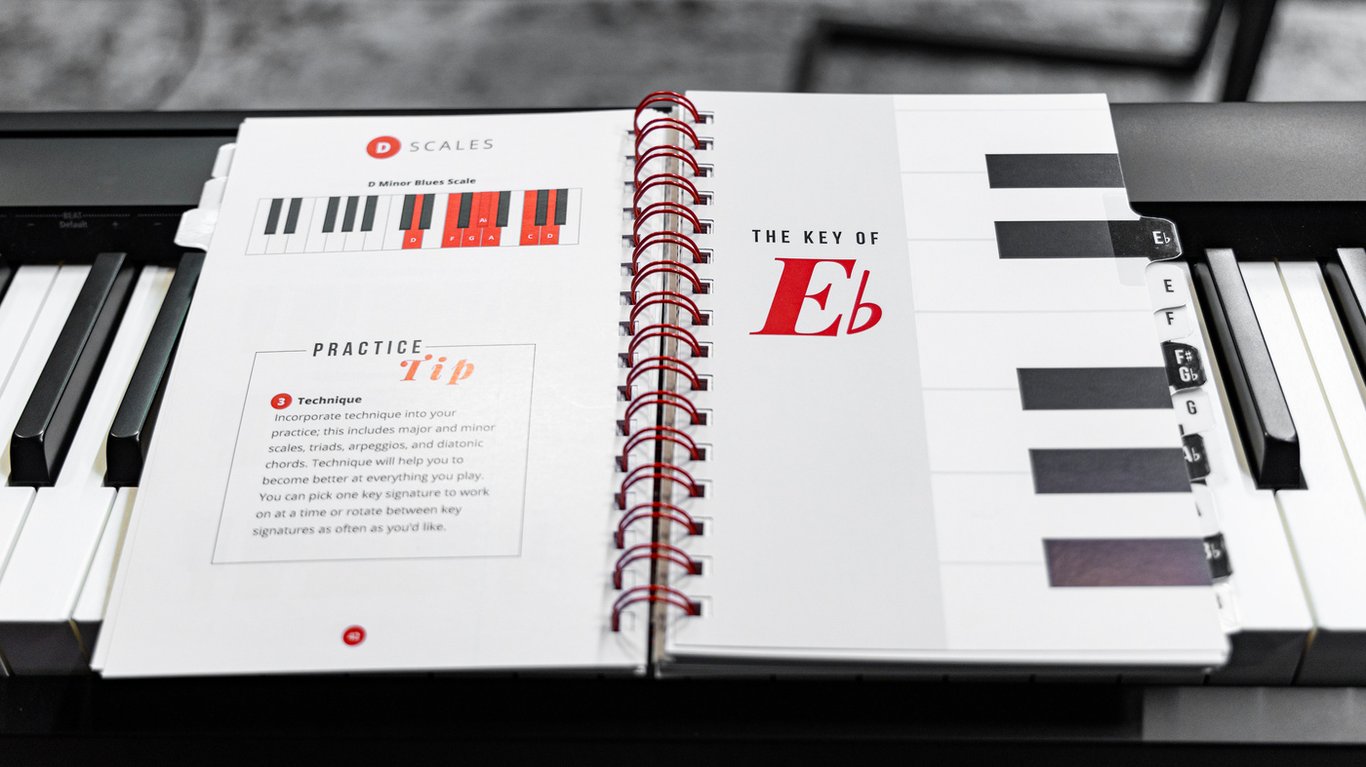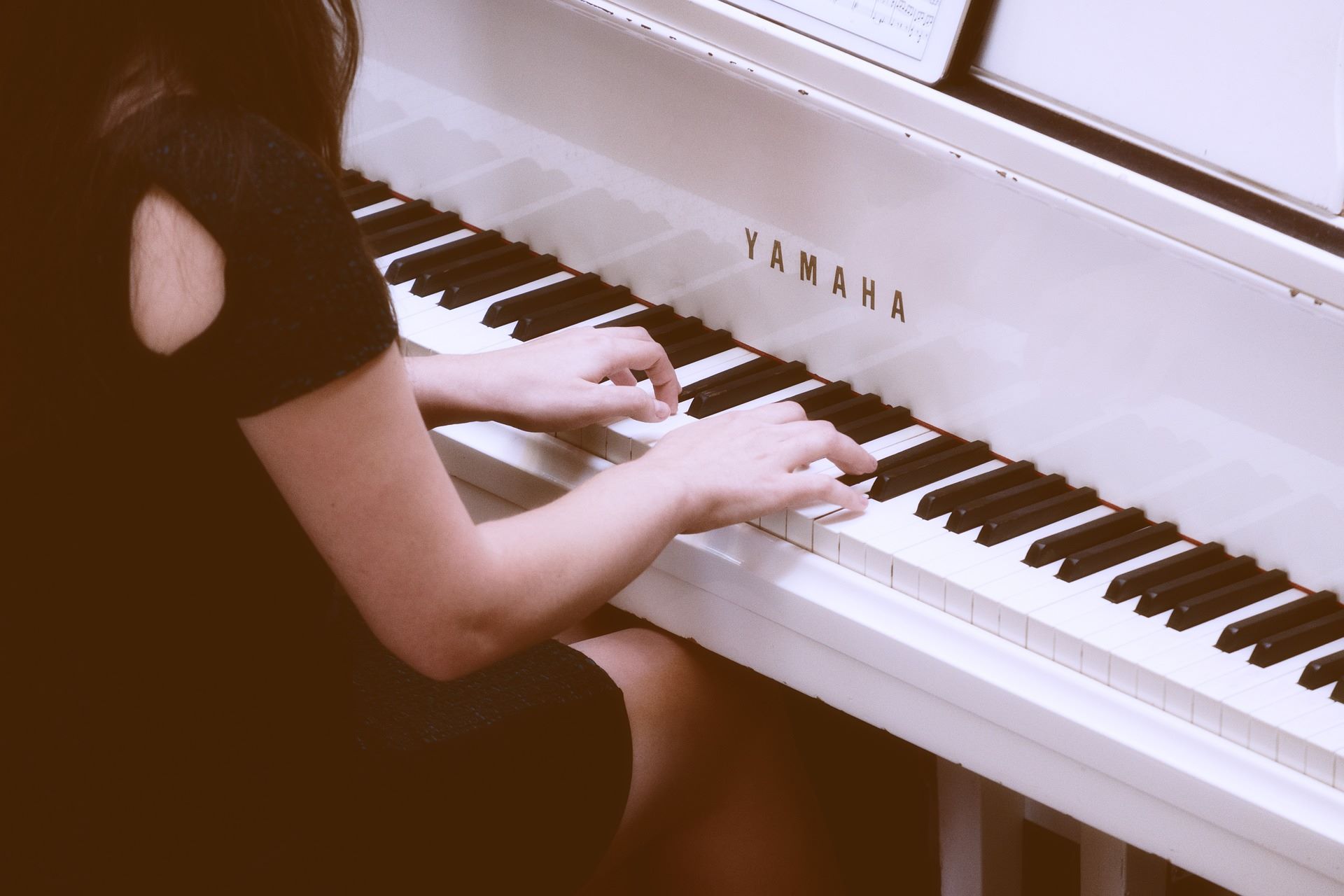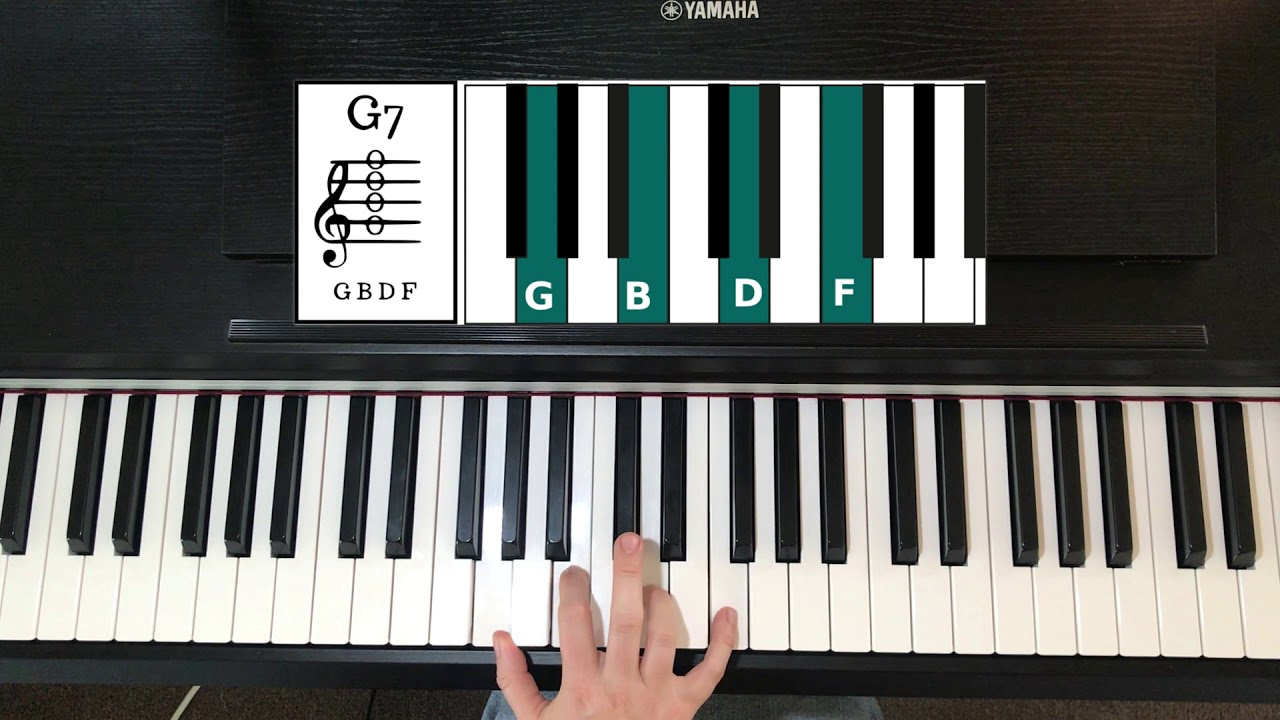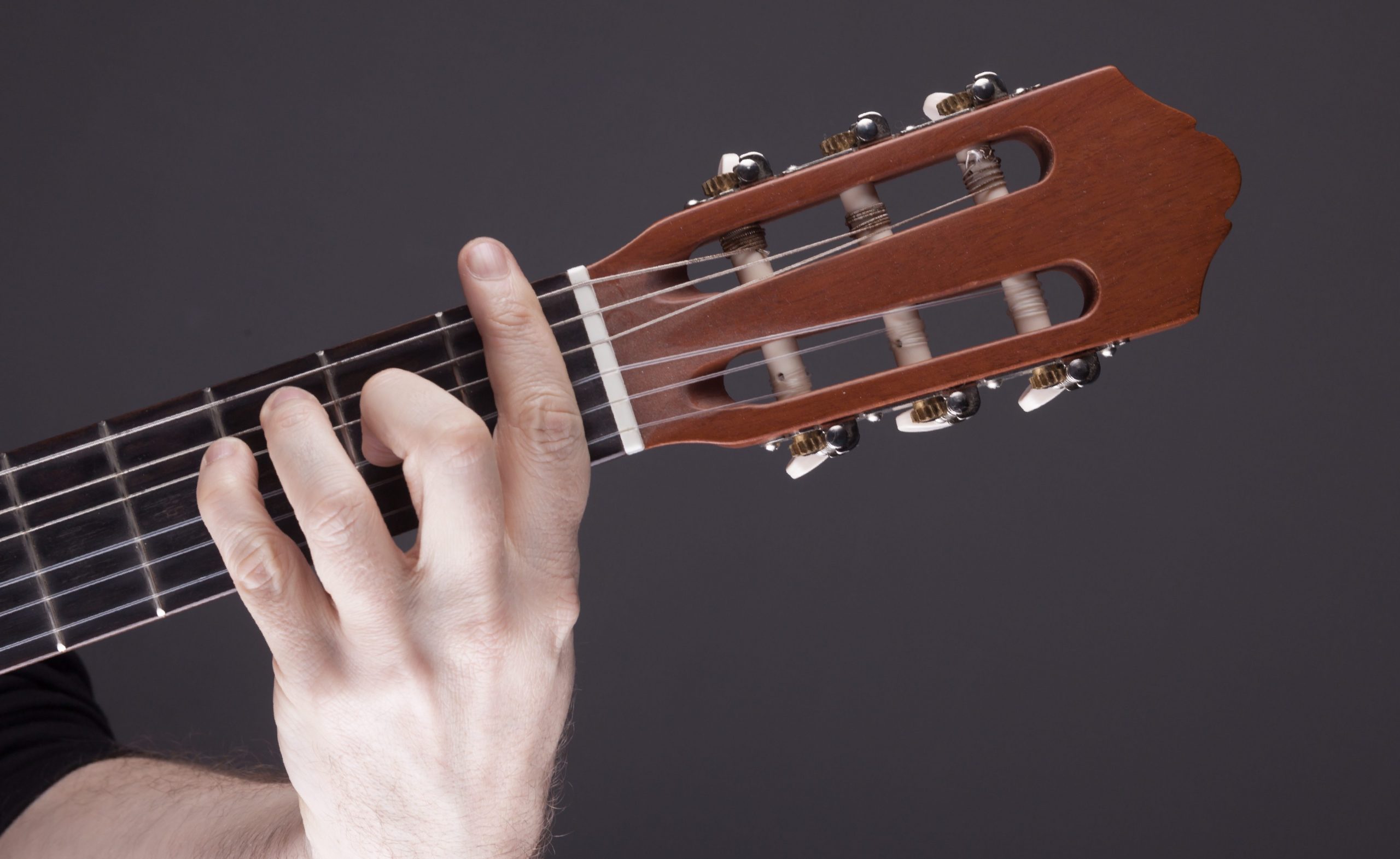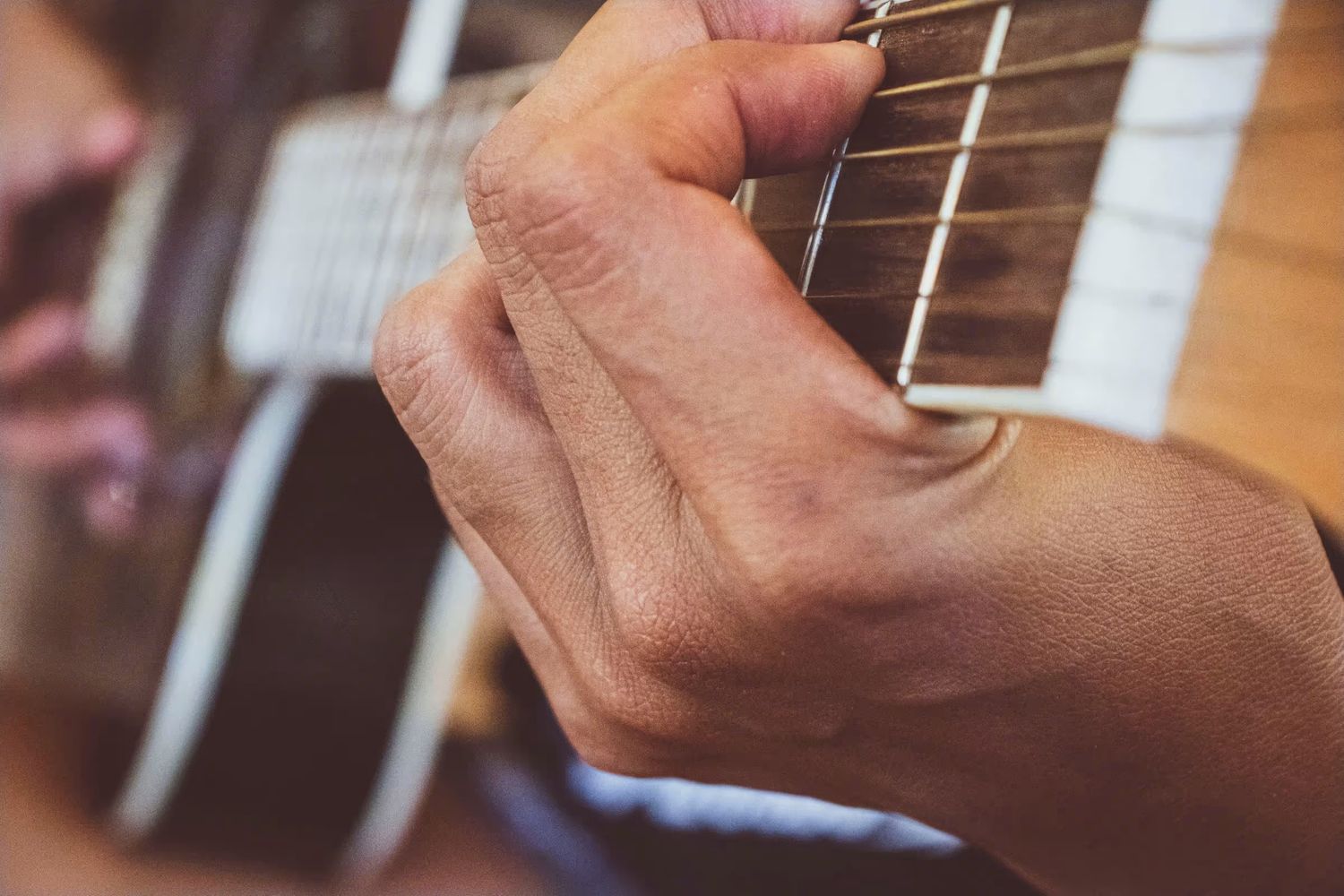Home>Instruments>Piano>How To Make Piano Chords
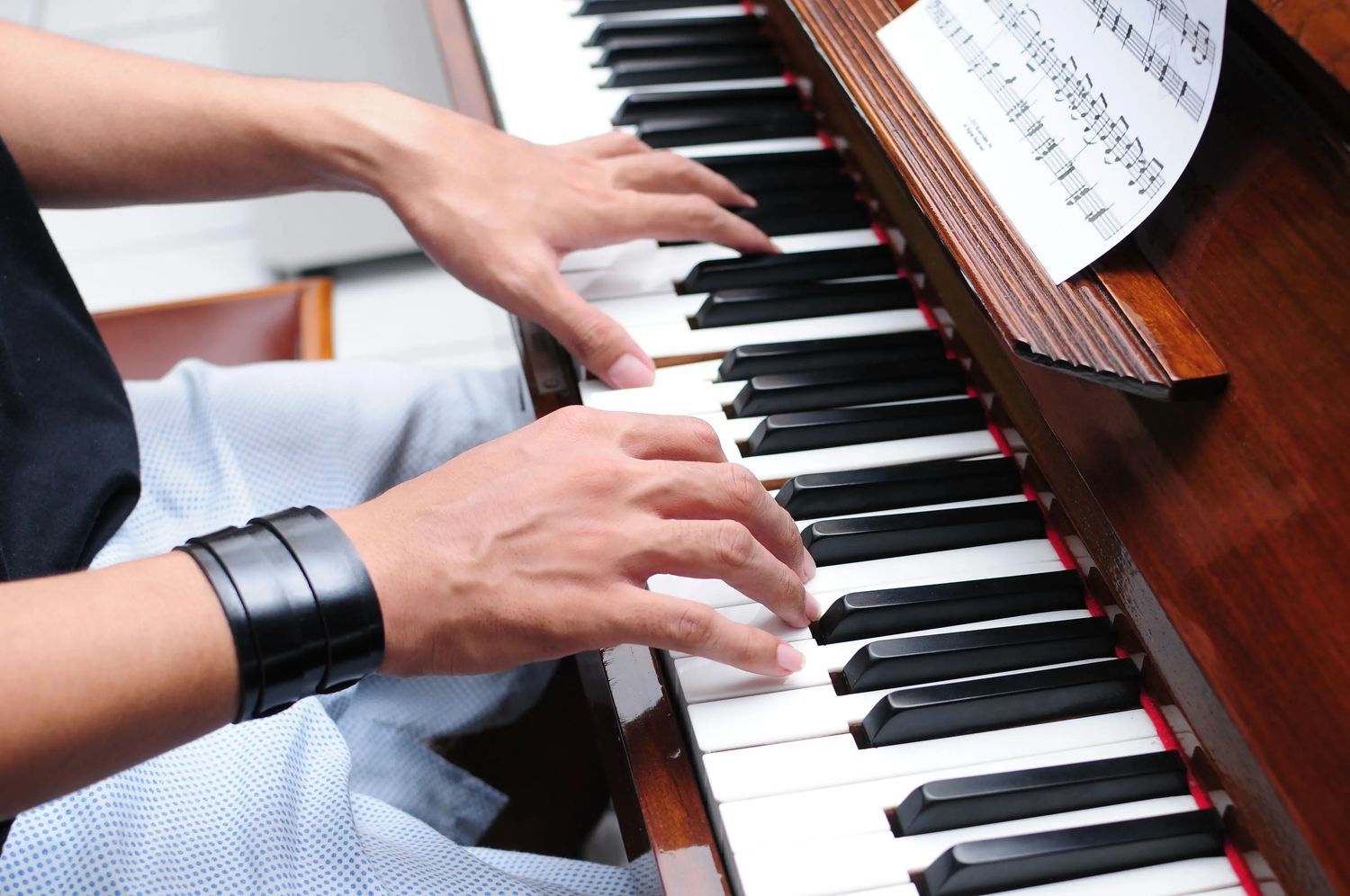

Piano
How To Make Piano Chords
Published: February 11, 2024
Learn how to create beautiful piano chords with our step-by-step guide. Master the art of playing piano chords and elevate your music skills today!
(Many of the links in this article redirect to a specific reviewed product. Your purchase of these products through affiliate links helps to generate commission for AudioLover.com, at no extra cost. Learn more)
Table of Contents
Introduction
Introduction
Learning how to play the piano is a rewarding journey that opens up a world of musical possibilities. One of the fundamental building blocks of piano playing is understanding and mastering piano chords. Whether you're a beginner eager to grasp the basics or an intermediate player looking to expand your chord vocabulary, this guide will provide valuable insights into creating and playing piano chords.
Mastering piano chords not only enhances your playing ability but also deepens your understanding of music theory. Chords form the harmonic foundation of nearly every song, and knowing how to construct and play them is essential for any aspiring pianist. In this comprehensive guide, we'll delve into the intricacies of piano chords, exploring major, minor, diminished, augmented, and seventh chords, as well as inversions and voicings.
Understanding piano chords is akin to unlocking a treasure trove of musical expression. By the end of this guide, you'll have a firm grasp of the theory behind piano chords and the practical skills to bring them to life on the keyboard. So, let's embark on this melodious journey and unravel the enchanting world of piano chords together. Whether you aspire to play classical masterpieces, jazz standards, or contemporary pop tunes, the knowledge of piano chords will serve as your faithful companion on your musical odyssey.
Understanding Piano Chords
Understanding Piano Chords
Before delving into the specific types of piano chords, it’s essential to grasp the foundational concept of what a chord is. In music theory, a chord is a group of three or more notes played together to create harmony. These notes are typically derived from the scale associated with the key of the song or piece being played. Understanding the structure of chords and their relationship to scales is crucial for any pianist aiming to master the instrument.
When playing piano chords, it’s important to understand the difference between the root, third, and fifth notes within a given scale. These notes form the basic structure of a chord and are essential for creating its distinctive sound. The root note serves as the foundation of the chord, providing a sense of stability and anchoring the overall harmonic structure. The third note determines whether the chord is major or minor, while the fifth note adds depth and richness to the chord’s tonality.
Furthermore, chords are often expressed using chord symbols, such as C, G, Dm, Am, and so on. These symbols represent the root note of the chord and provide a quick reference for musicians to understand and interpret the harmonic progression of a piece of music. As you progress in your piano journey, you’ll become adept at recognizing these symbols and translating them into beautiful, resonant chord progressions on the keyboard.
Understanding the theory behind piano chords empowers you to express a wide range of emotions and moods through your playing. Whether you’re aiming for a jubilant, triumphant sound with major chords or a more introspective, melancholic atmosphere with minor chords, your command of piano chords will be the key to unlocking these expressive possibilities. As we continue our exploration, we’ll delve into the specific characteristics of major, minor, diminished, augmented, and seventh chords, each adding its own unique color to the musical palette.
Major Chords
Major Chords
Major chords are the cornerstone of harmonic stability and brightness in music. They are constructed from the first, third, and fifth notes of a major scale, producing a sound that is often described as uplifting and optimistic. When you play a major chord on the piano, you’re creating a sense of resolution and completeness, making it a vital element in countless musical compositions across various genres.
One of the most iconic and widely recognized major chords is the C major chord, comprised of the notes C, E, and G. This chord exemplifies the quintessential sound of a major chord, evoking feelings of joy and positivity. As you progress in your piano journey, you’ll encounter major chords rooted in different keys, each with its own distinct character and emotional resonance.
Playing major chords on the piano involves positioning your fingers to simultaneously strike the relevant notes, creating a harmonious blend of tones. For instance, when playing a C major chord, you would typically place your thumb on C, your middle finger on E, and your pinky on G. This finger positioning allows you to produce a resonant, full-bodied sound that embodies the essence of the major chord’s bright and cheerful nature.
Mastering major chords on the piano opens the door to a myriad of musical possibilities. Whether you’re interpreting classical compositions by renowned maestros, playing timeless pop hits, or improvising your own melodies, the versatility and emotive power of major chords will enrich your musical expression. As we progress through this guide, we’ll continue to explore the nuances of major chords and their role in shaping the harmonic landscape of piano music.
Minor Chords
Minor Chords
In contrast to the bright and uplifting sound of major chords, minor chords evoke a sense of depth, introspection, and emotional complexity. These chords are crafted from the first, flattened third, and fifth notes of a major scale, resulting in a distinctive tonal quality that resonates with melancholy and introspection. As a pianist, mastering the art of playing minor chords is essential for infusing your music with a rich tapestry of emotions and moods.
One of the most renowned minor chords is the A minor chord, comprising the notes A, C, and E. When played on the piano, the A minor chord exudes a sense of introspective beauty, making it a staple in a wide array of musical genres, from classical compositions to contemporary ballads. As you delve into the world of piano playing, you’ll encounter minor chords rooted in various keys, each offering its own unique emotional resonance.
Playing minor chords on the piano requires a nuanced approach to finger positioning and touch. The subtle adjustment of the third note, flattened from its major scale counterpart, imbues the minor chord with its signature bittersweet sound. As you navigate the keys to produce the haunting allure of a minor chord, you’ll find yourself tapping into a wellspring of expressive potential, capable of conveying a spectrum of emotions from wistfulness to profound introspection.
Mastering minor chords empowers you to imbue your piano playing with a profound sense of emotional depth and complexity. Whether you’re interpreting hauntingly beautiful classical compositions, delving into the rich tapestry of jazz standards, or crafting your own evocative melodies, the evocative allure of minor chords will serve as a cornerstone of your musical expression. As we continue our exploration, we’ll delve deeper into the intricacies of minor chords and their role in shaping the emotive landscape of piano music.
Diminished and Augmented Chords
Diminished and Augmented Chords
Diminished and augmented chords add a layer of complexity and intrigue to the harmonic tapestry of piano music. These chords deviate from the traditional major and minor qualities, offering a unique and enigmatic sonic palette that captivates the listener’s ear. Understanding the distinct characteristics of diminished and augmented chords equips pianists with the tools to infuse their music with tension, suspense, and unexpected harmonic twists.
Diminished chords are crafted from the root, flattened third, and flattened fifth notes of a major scale. This distinctive combination of notes produces a sense of unease and dissonance, making diminished chords a compelling choice for creating musical tension and suspense. When played on the piano, a diminished chord exudes an air of mystery, adding an intriguing layer to the sonic narrative of a composition.
On the other hand, augmented chords are constructed from the root, major third, and augmented fifth notes of a major scale. The augmented fifth, also known as a sharp fifth, imbues the chord with a sense of yearning and unresolved tension, creating an aura of anticipation and unpredictability. When integrated into a musical passage, an augmented chord introduces an element of surprise and adventurous harmonic exploration.
Exploring the nuances of diminished and augmented chords expands the expressive range of a pianist, offering a diverse array of tonal colors to convey a spectrum of emotions and moods. Whether you’re seeking to infuse your music with a sense of mystery, tension, or yearning, these unconventional chords provide a captivating means of enriching your musical storytelling.
As you continue your piano journey, embracing the enigmatic allure of diminished and augmented chords will empower you to craft compositions that resonate with depth and complexity. Whether you’re interpreting evocative film scores, delving into the realms of avant-garde music, or composing your own musical narratives, the distinct qualities of diminished and augmented chords will serve as invaluable tools for sculpting captivating harmonic landscapes.
Seventh Chords
Seventh Chords
Seventh chords are a cornerstone of rich, expressive harmony in piano music, infusing compositions with a sense of sophistication and allure. These chords, as the name suggests, incorporate the seventh note of the associated scale, adding an additional layer of complexity and color to the harmonic progression. As a pianist, mastering the art of playing seventh chords unlocks a treasure trove of expressive possibilities, allowing you to craft compositions that resonate with depth and nuance.
One of the most iconic seventh chords is the dominant seventh chord, often denoted as C7. This chord comprises the notes C, E, G, and B-flat, creating a sense of tension and resolution that adds dynamic energy to a musical passage. When played on the piano, the dominant seventh chord exudes a captivating blend of anticipation and resolve, making it a versatile and essential component of jazz, blues, and popular music genres.
Seventh chords come in various forms, including major seventh, minor seventh, and diminished seventh chords, each offering its own distinct tonal qualities and emotive resonance. The major seventh chord, for example, infuses compositions with a lush, introspective aura, while the minor seventh chord adds a touch of melancholic allure. The diminished seventh chord, with its enigmatic and suspenseful character, contributes a layer of intrigue to harmonic progressions.
Mastering the art of playing seventh chords on the piano empowers you to craft compositions that resonate with depth and complexity. Whether you’re interpreting jazz standards, composing soulful ballads, or exploring the realms of contemporary music, the expressive allure of seventh chords will serve as a cornerstone of your musical storytelling. As we delve deeper into the world of piano chords, we’ll continue to explore the nuanced qualities of seventh chords and their role in shaping the emotive landscape of piano music.
Inversions and Voicings
Inversions and Voicings
As a pianist, understanding inversions and voicings is essential for adding depth and richness to your chord progressions. Inversions refer to the reordering of the notes within a chord, resulting in a different positioning of the root, third, and fifth notes. This reconfiguration allows for smoother transitions between chords and creates a more fluid and harmonically diverse musical landscape.
When a chord is played in its root position, the root note is positioned as the lowest note, providing a stable foundation for the chord. However, by utilizing inversions, you can alter the arrangement of the notes, placing the third or fifth as the lowest note. This technique introduces a sense of movement and fluidity to your playing, enabling you to transition seamlessly between chords and create captivating harmonic progressions.
Voicings, on the other hand, pertain to the specific arrangement and spacing of the notes within a chord. By experimenting with different voicings, you can imbue your chord progressions with a diverse range of textures and tonal colors. Whether you opt for open voicings, where the notes are spread out across the keyboard, or closed voicings, which involve clustering the notes within a smaller range, voicings offer a versatile means of shaping the sonic character of your chords.
Mastering inversions and voicings empowers you to elevate your piano playing to new heights of expressiveness and sophistication. Whether you’re navigating the evocative harmonies of jazz standards, interpreting the timeless elegance of classical compositions, or crafting your own original pieces, the artful application of inversions and voicings will enrich your musical storytelling.
As you continue your exploration of piano chords, delving into the realm of inversions and voicings will open up a world of creative possibilities, allowing you to craft compositions that resonate with depth, nuance, and emotive resonance. By honing your skills in utilizing inversions and voicings, you’ll embark on a journey of musical discovery, enriching your playing with the captivating allure of harmonically diverse and expressive chord progressions.
Conclusion
Conclusion
Embarking on the journey of mastering piano chords is a transformative odyssey that empowers you to unlock the boundless expressive potential of the instrument. From the foundational understanding of major and minor chords to the captivating allure of diminished, augmented, and seventh chords, each facet of piano harmony contributes to the rich tapestry of musical storytelling.
As you immerse yourself in the world of piano chords, you’ll discover the profound impact they have on shaping the emotional landscape of music. Major chords exude jubilant optimism, while minor chords resonate with introspective depth. Diminished and augmented chords introduce enigmatic tension and suspense, and seventh chords infuse compositions with sophistication and allure.
Furthermore, delving into the art of inversions and voicings expands the horizons of your harmonic palette, allowing for fluid transitions between chords and the creation of diverse tonal textures. Whether you’re interpreting timeless classics, exploring the realms of jazz and blues, or composing your own original pieces, the mastery of piano chords serves as the cornerstone of your musical journey.
As you continue to hone your skills and delve deeper into the nuances of piano chords, remember that each chord embodies a unique emotional resonance, waiting to be woven into the fabric of your musical narratives. Whether you’re evoking joy, introspection, mystery, or sophistication, the expressive power of piano chords will accompany you as you craft compositions that resonate with depth, nuance, and emotive allure.
So, as you sit at the piano, let the chords beneath your fingers tell stories, evoke emotions, and paint vivid sonic landscapes. Embrace the journey of mastering piano chords, and let your music reverberate with the timeless beauty and expressive richness that only the piano can convey.


